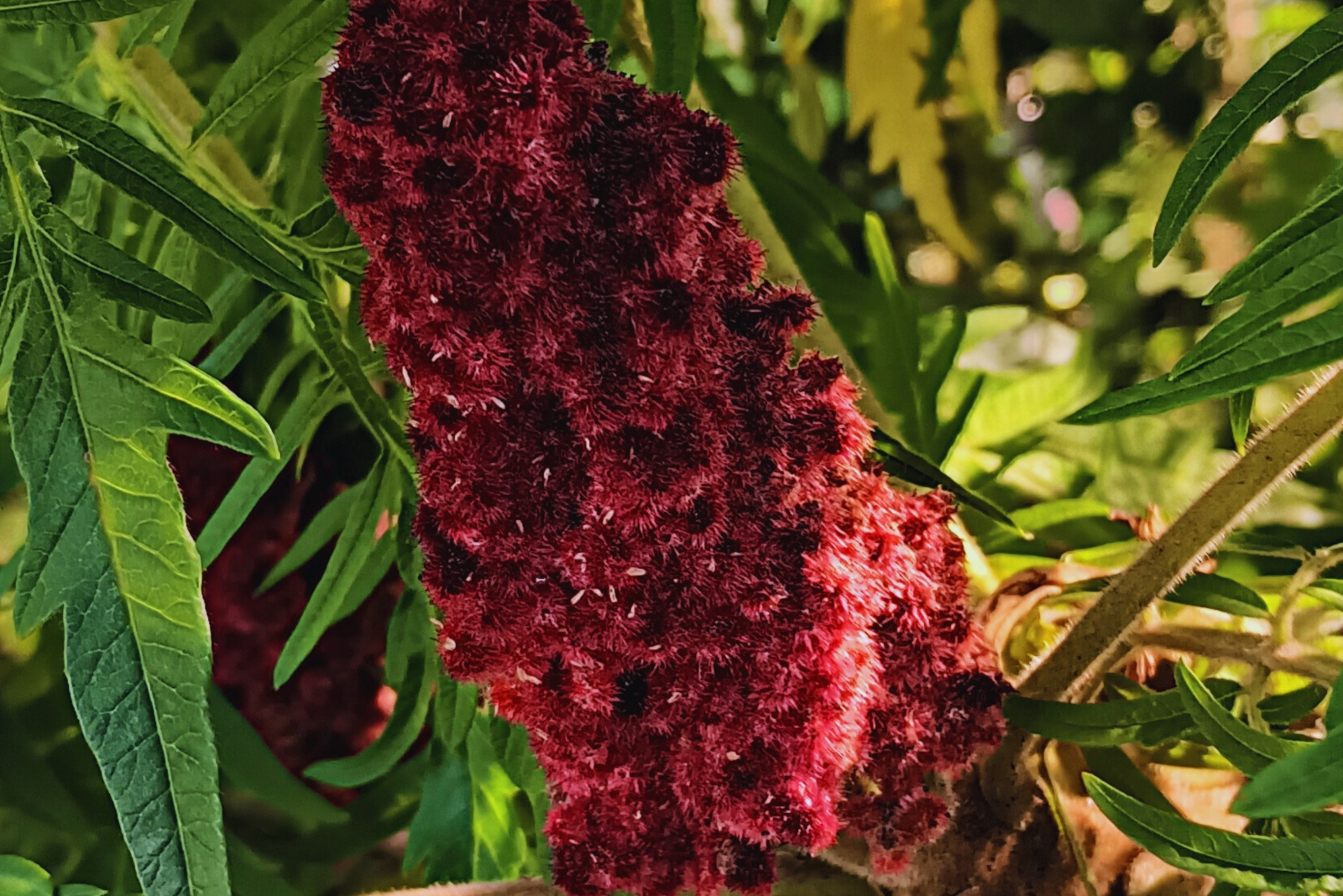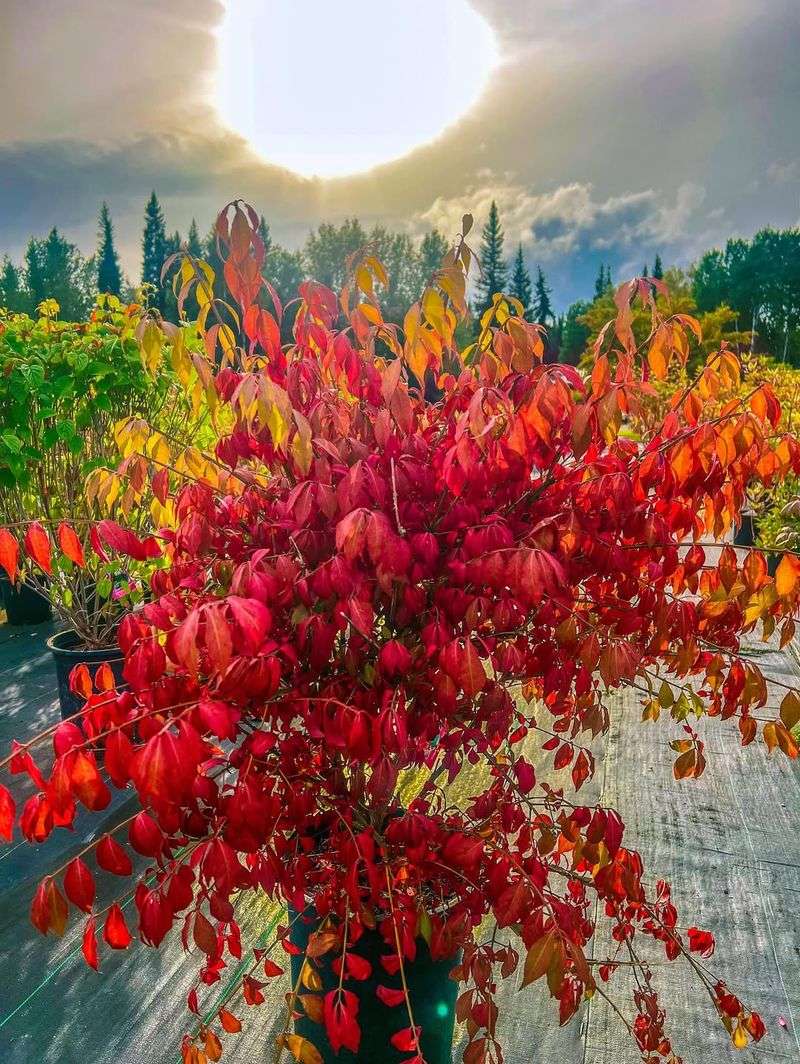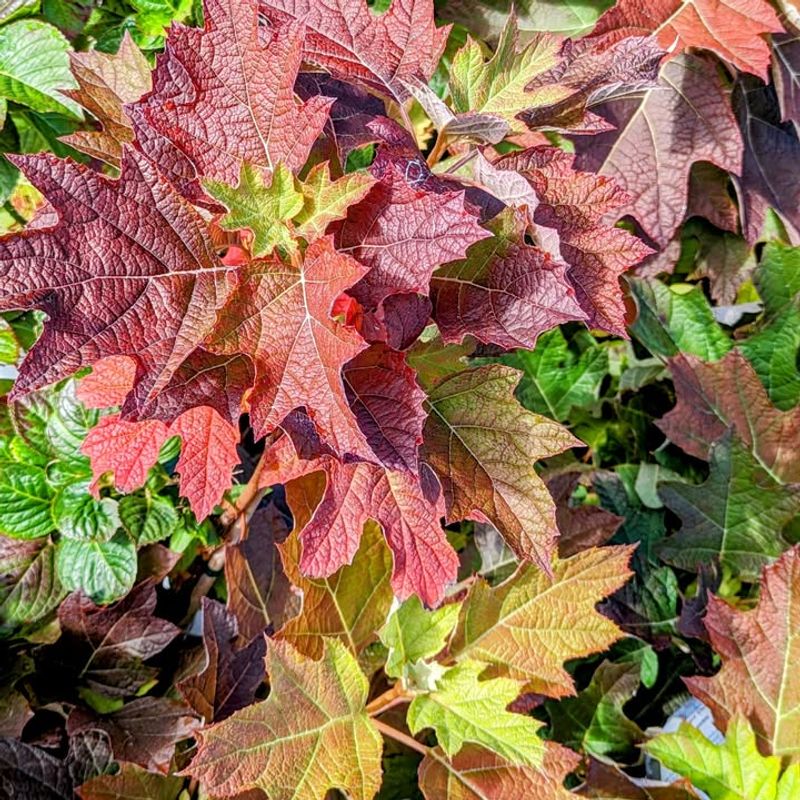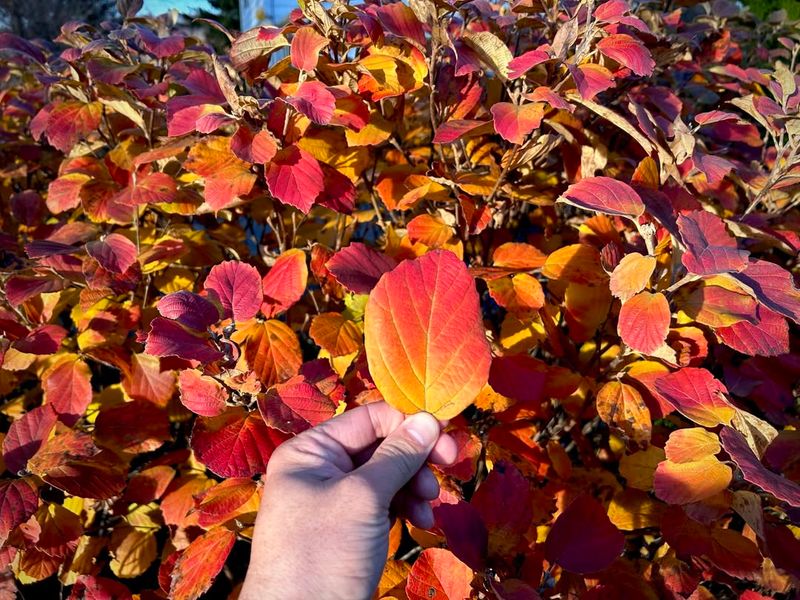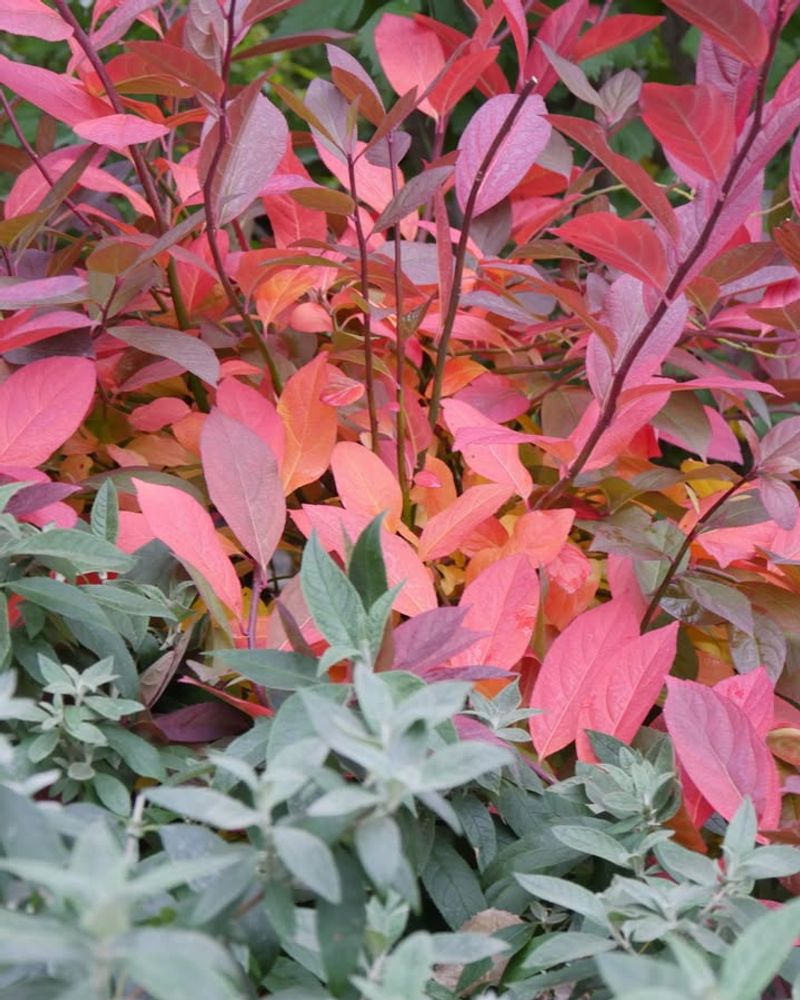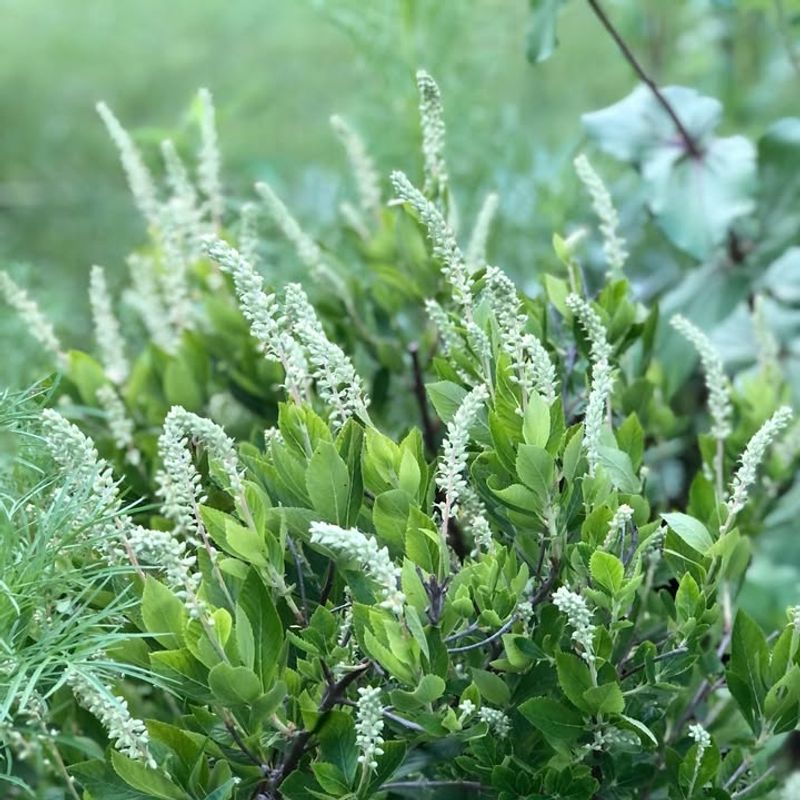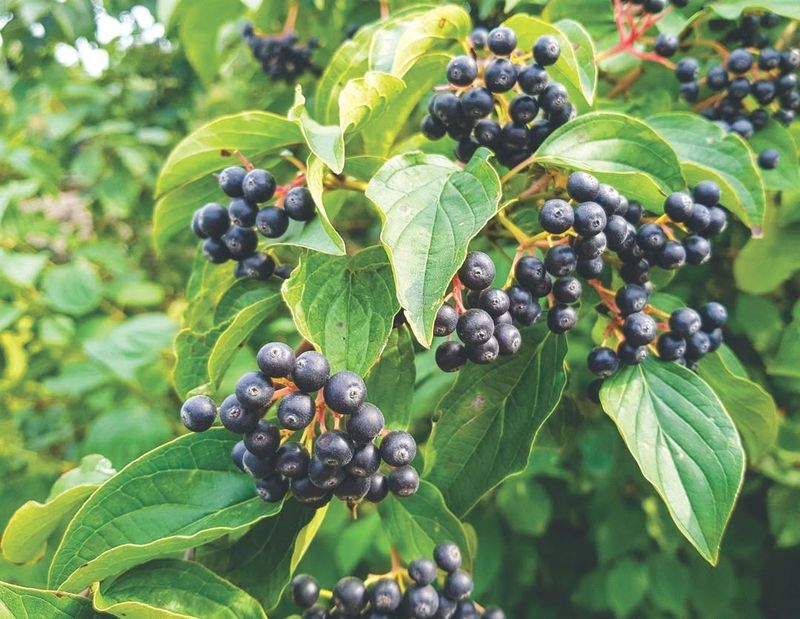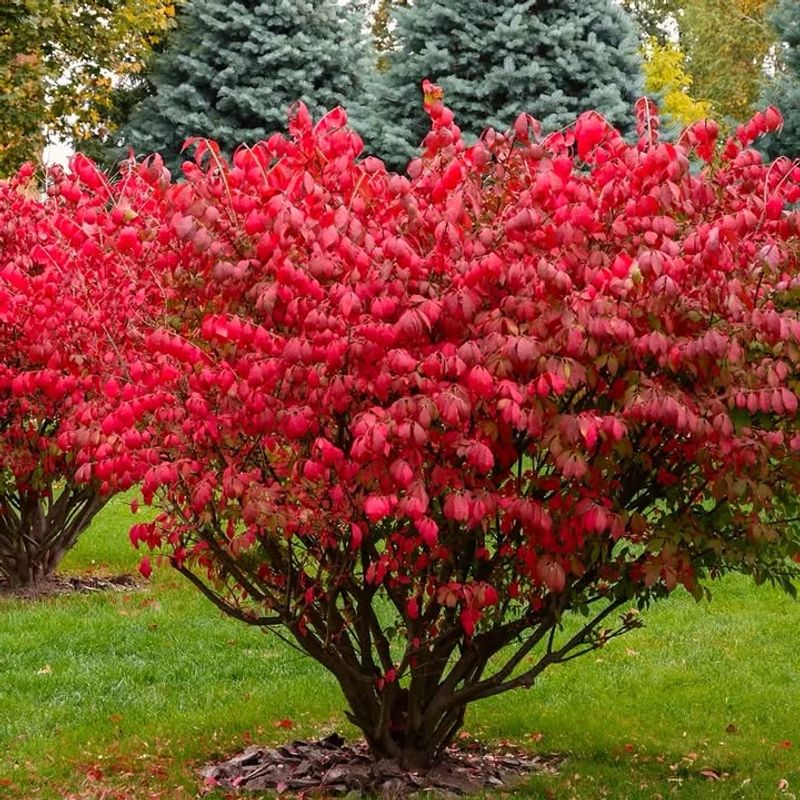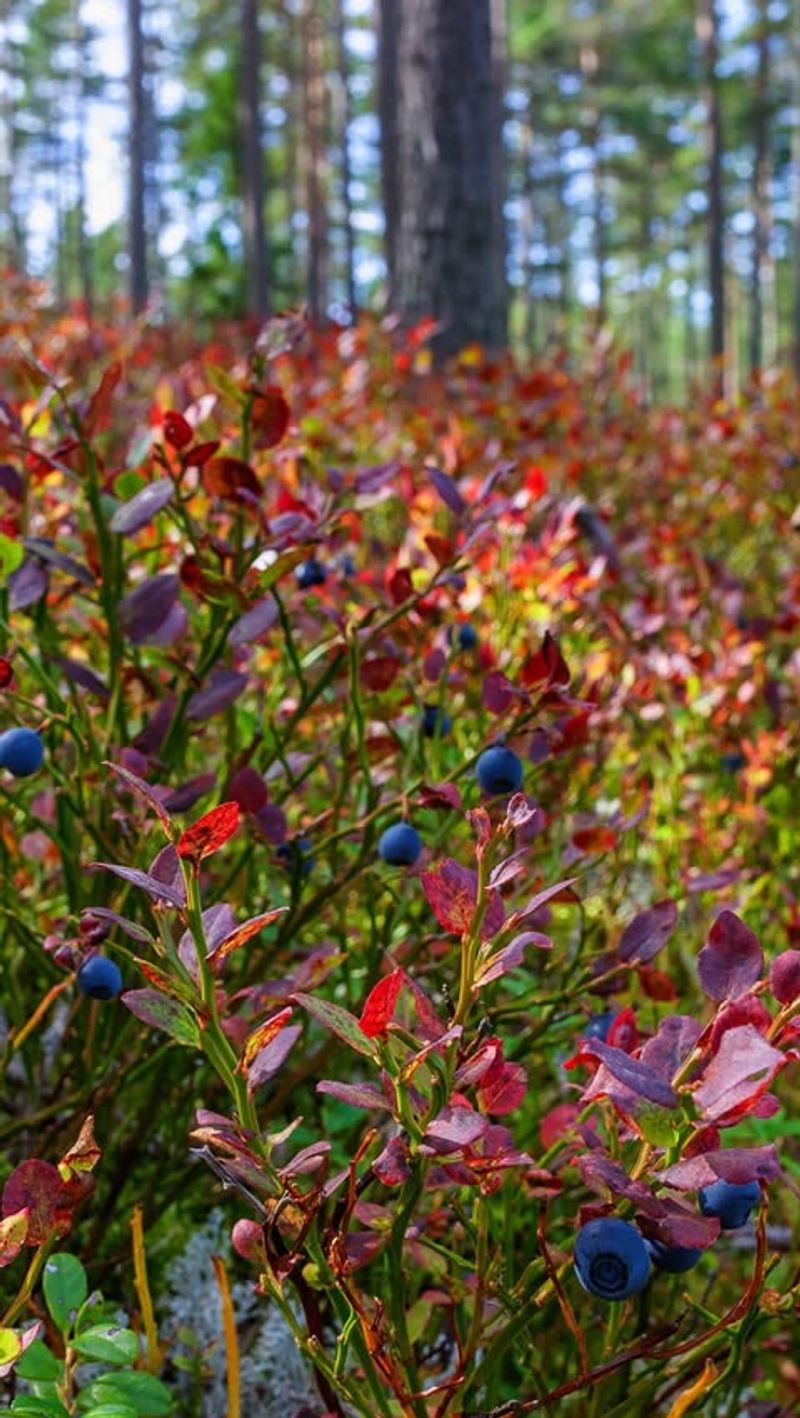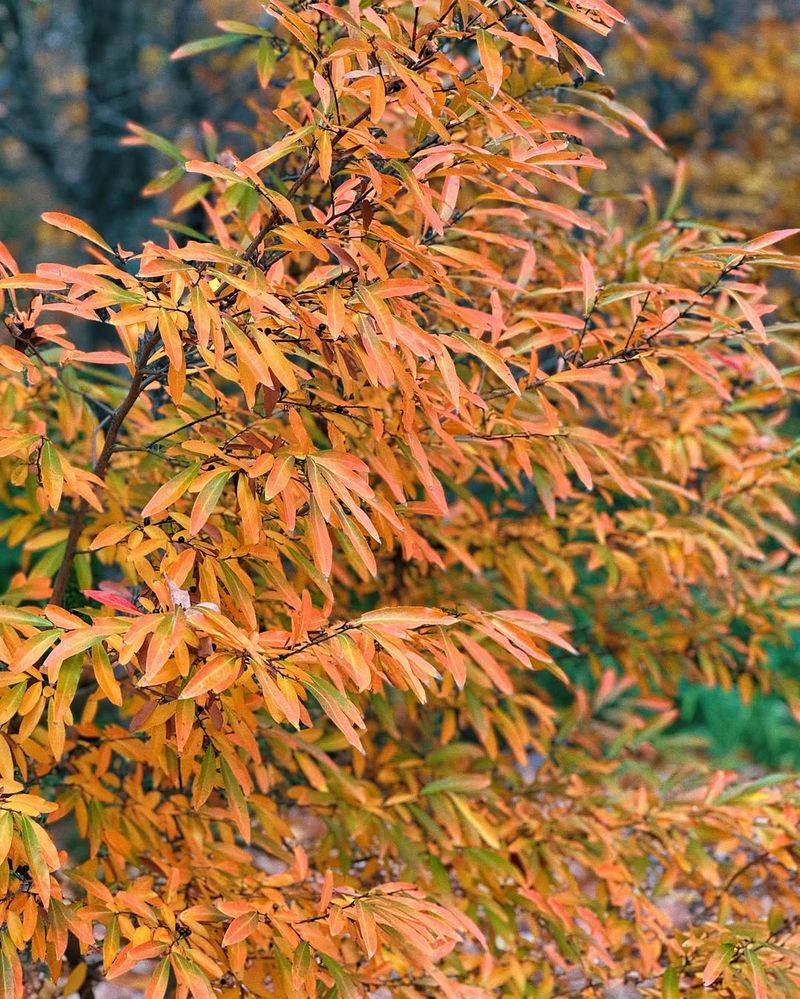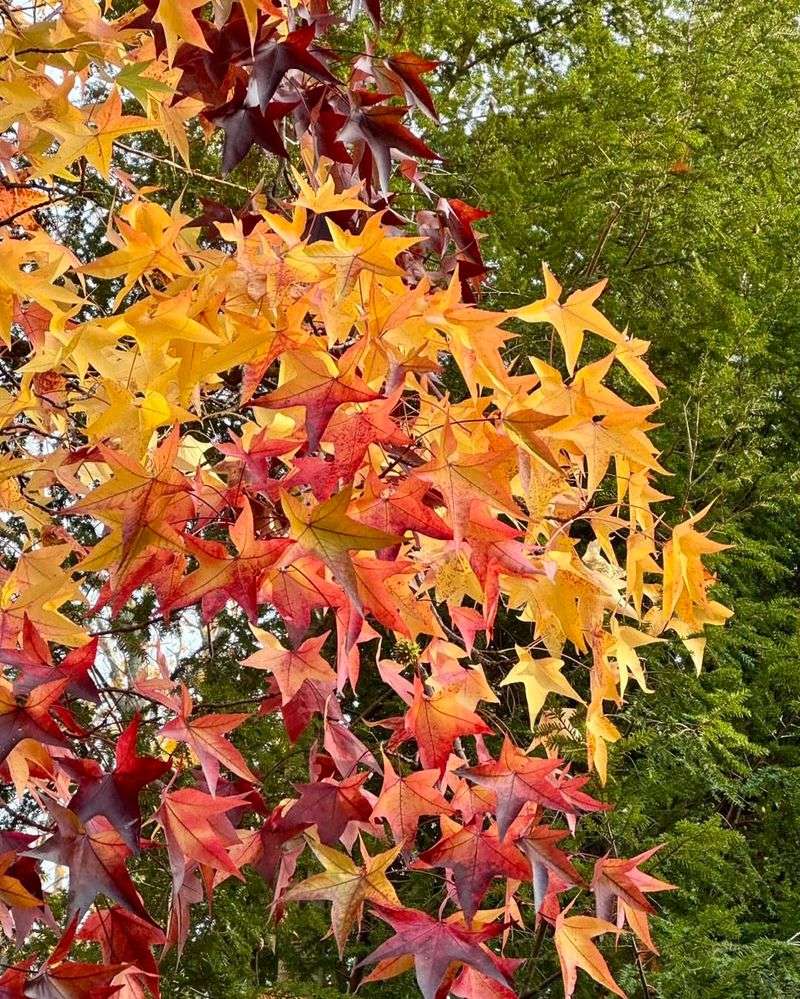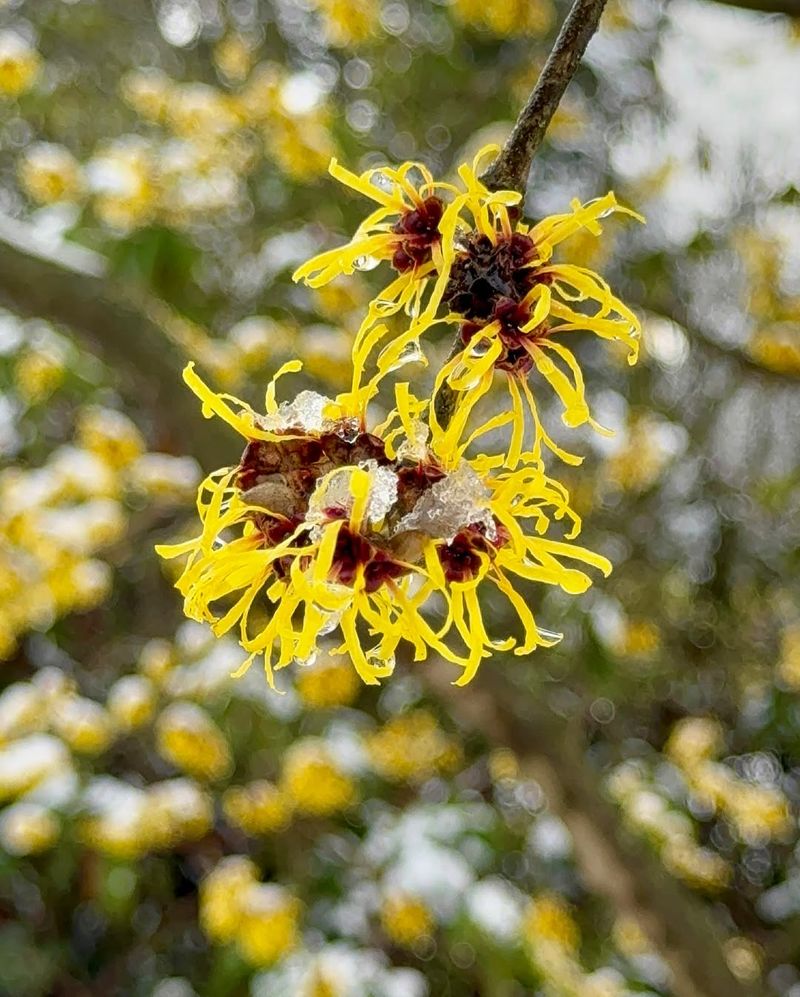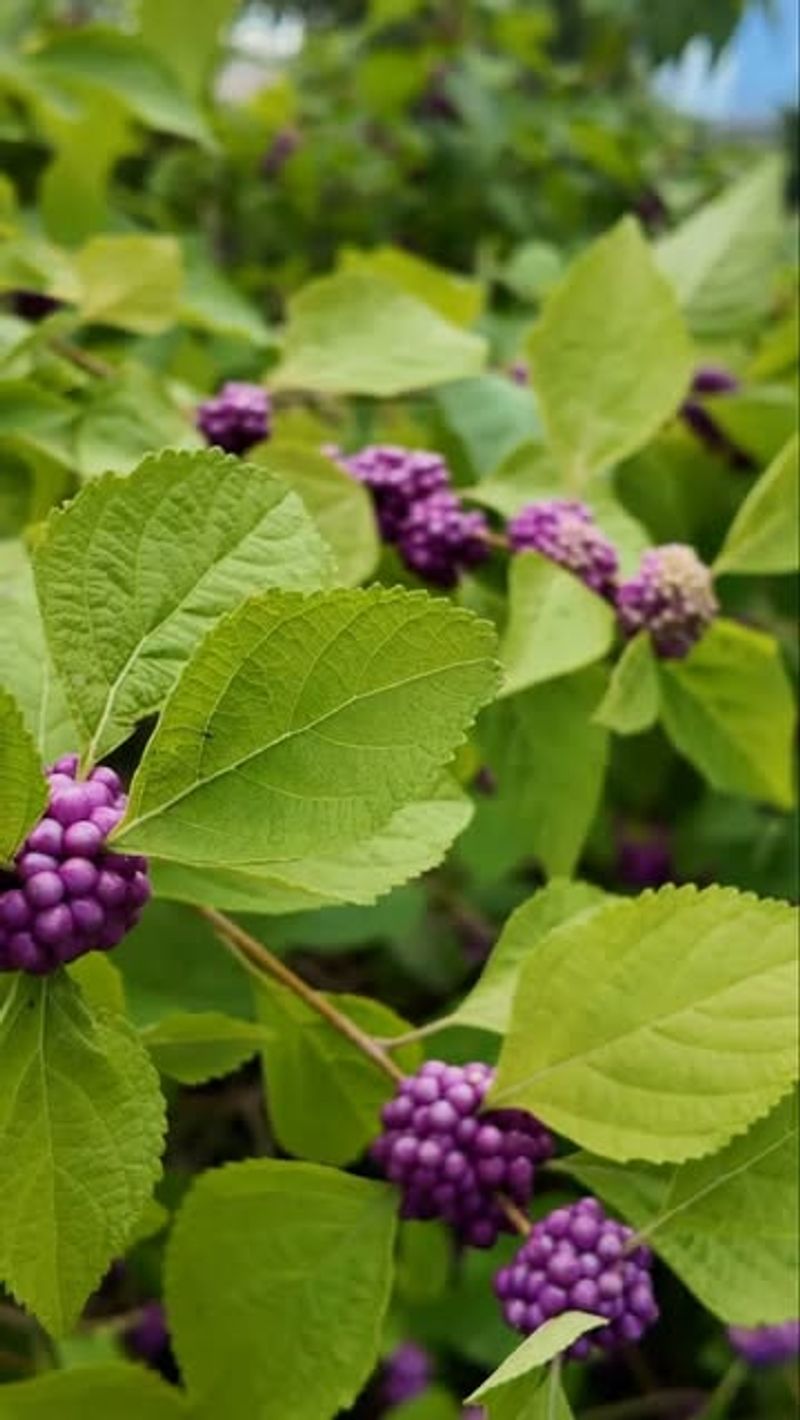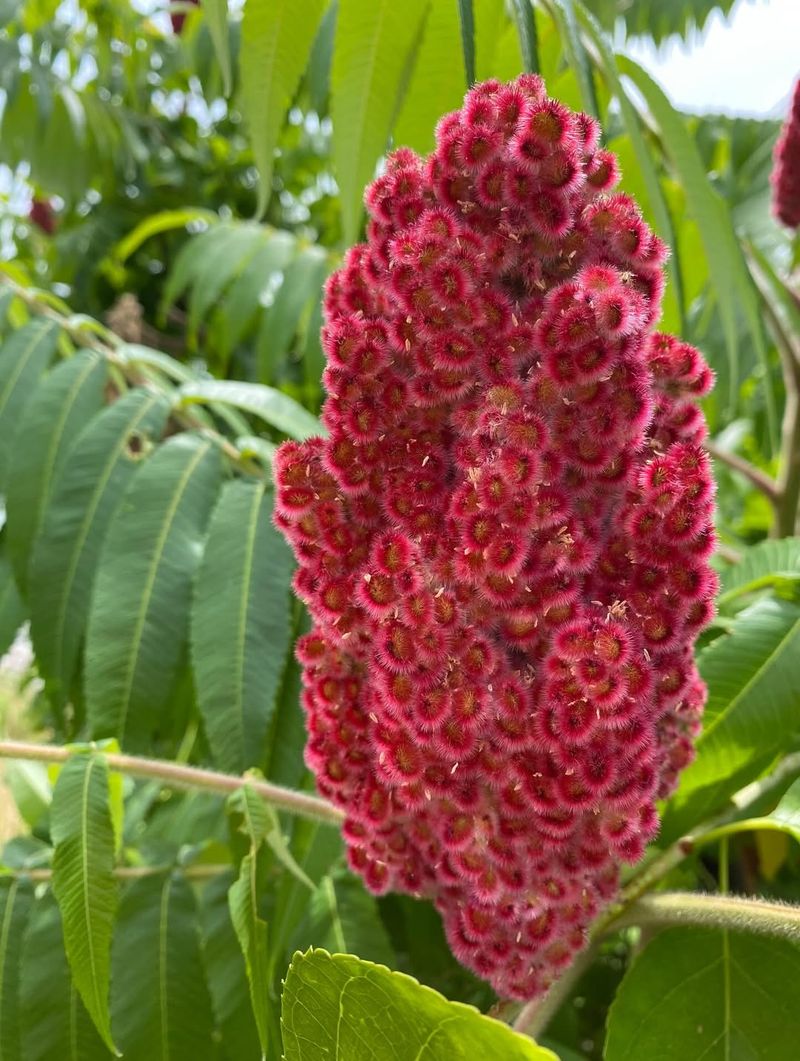October in Georgia brings cooler temperatures and a stunning transformation in the landscape. While many people think fall color comes only from trees, shrubs can steal the show with brilliant reds, oranges, and purples.
Planting the right shrubs in your yard means you’ll enjoy a spectacular autumn display right outside your window every year.
1. Burning Bush
When autumn arrives, this shrub lives up to its dramatic name with fiery red leaves that practically glow in the sunlight. Gardeners love how reliable it is, turning crimson every single year without fail.
It grows well in most Georgia soils and doesn’t need much attention once established. The compact size makes it perfect for smaller yards or as a border along walkways.
Plant it where you’ll see it often because the color is too beautiful to miss during October’s peak season.
2. Oakleaf Hydrangea
Native to the southeastern United States, this hydrangea variety offers more than just summer blooms. Come October, its large oak-shaped leaves transform into stunning shades of burgundy, crimson, and deep purple.
The foliage creates a rich tapestry of color that lasts for weeks. It thrives in partial shade, making it ideal for those tricky spots under trees where other plants struggle.
Bonus: the dried flower heads add winter interest long after the leaves drop.
3. Fothergilla
Few shrubs can match the multi-colored display that Fothergilla puts on each fall. Leaves shift through yellow, orange, and scarlet all at once, creating a sunset effect on a single plant.
Spring brings fragrant white bottlebrush flowers, so you get two seasons of interest. It prefers acidic soil, which Georgia naturally provides in many areas.
Deer tend to leave it alone, which is a huge advantage if wildlife visits your yard regularly.
4. Virginia Sweetspire
With arching branches covered in brilliant red and burgundy leaves, Virginia Sweetspire brings elegance to autumn gardens. This native shrub adapts to wet or dry conditions, making it incredibly versatile for Georgia landscapes.
Fragrant white flower spikes appear in late spring, attracting butterflies and bees. The fall color develops gradually, deepening as temperatures drop throughout October.
It spreads slowly through suckers, creating a natural-looking colony over time without becoming invasive or problematic.
5. Summersweet Clethra
Golden yellow foliage lights up shady corners when Summersweet transitions into autumn mode. Earlier in the season, its fragrant white or pink flower spikes perfume the entire garden with a sweet, spicy scent.
It tolerates wet soil better than most shrubs, thriving in low-lying areas that stay damp. The upright growth habit keeps it tidy without constant pruning.
Pollinators adore the summer blooms, and you’ll enjoy the cheerful yellow leaves when October rolls around each year.
6. Chokeberry
Glossy leaves turn extraordinary shades of red and purple-red as October progresses, while dark berries dangle from the branches. Birds feast on the nutritious fruit throughout fall and winter, bringing wildlife activity to your yard.
Both red and black chokeberry varieties perform beautifully in Georgia’s climate. They tolerate poor soil and drought once their roots are established.
The spring flowers are delicate and white, adding another season of beauty beyond the spectacular autumn transformation.
7. Winged Euonymus
Corky ridges along the stems give this shrub its distinctive appearance and common name. October brings an explosion of rosy-red color that rivals any tree for intensity and brightness.
It handles urban pollution and tough growing conditions without complaint. The dense branching pattern provides privacy screening during the growing season.
Some gardeners use it as a hedge, while others feature it as a standalone specimen where the fall color becomes a focal point in the landscape.
8. Blueberry Shrubs
Beyond producing delicious summer fruit, blueberry bushes deliver spectacular fall color in shades of red, orange, and bronze. The leaves develop their richest hues when nights turn cooler in October.
Georgia’s naturally acidic soil suits them perfectly, and they need minimal care once established. Multiple bushes increase fruit production through cross-pollination.
Even if you don’t harvest the berries, birds will appreciate them, and you’ll still enjoy the stunning autumn display every single year.
9. Spicebush
Bright buttery-yellow leaves create a cheerful glow in woodland settings when October arrives. Crushing the leaves or twigs releases a pleasant spicy fragrance that gives this native shrub its name.
Female plants produce red berries that migrating birds rely on for energy during their long journeys. It thrives in shade where many other colorful shrubs would fail to perform.
Early spring brings tiny yellow flowers before leaves emerge, extending its seasonal interest beyond just the fall months.
10. Sweetgum Shrub Form
While sweetgum is often grown as a tree, dwarf cultivars stay shrub-sized and deliver the same incredible fall color. Leaves turn multiple colors simultaneously—red, orange, yellow, and purple all appear on the same plant.
The star-shaped leaves add interesting texture throughout the growing season. It prefers full sun for the most vibrant autumn display.
These smaller varieties fit better in modern landscapes where space is limited but you still want that classic Georgia fall look.
11. Witch Hazel
Golden yellow leaves appear just as the unusual ribbon-like flowers begin to bloom in late October. This shrub offers a unique combination of fall foliage and late-season blossoms that few others can match.
The flowers range from yellow to orange to red depending on the variety. It grows slowly but eventually reaches a substantial size with an attractive vase-shaped form.
Native varieties adapt easily to Georgia conditions and provide year-round interest with minimal maintenance or special care required.
12. Beautyberry
Clusters of iridescent purple berries steal the spotlight in October, while the foliage shifts to soft yellow-gold tones. The berry color is unlike anything else in nature—almost neon in its brightness.
Birds eventually eat the berries, but they last for weeks first, providing extended ornamental value. It dies back in winter but returns vigorously each spring.
Native to the southeastern United States, it thrives in Georgia’s climate with absolutely no fussing or complicated care routines needed.
13. Sumac
Compound leaves turn flaming shades of orange and scarlet-red that rival any autumn display in the state. Fuzzy red berry clusters stand upright on female plants, adding another layer of color and texture.
It spreads through underground runners, forming colonies that naturalize well in larger spaces. The dramatic fall color develops early, often starting in late September.
Drought tolerance makes it ideal for dry slopes or areas where watering is impractical or impossible during summer months.

